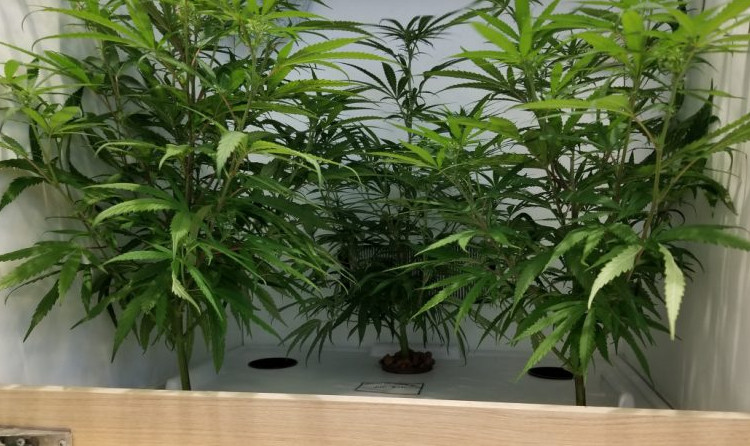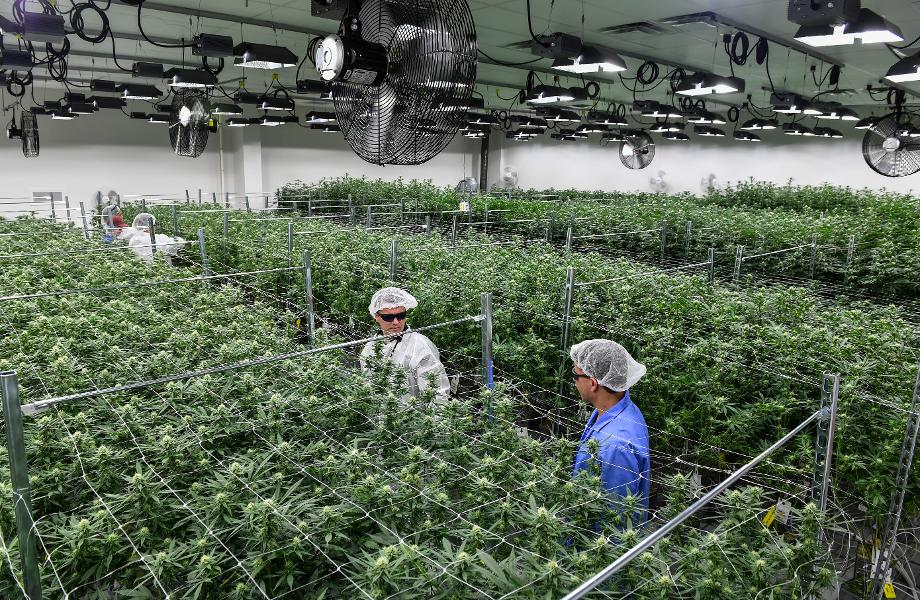Marijuana stocks seem like the Holy Grail for investors.According to cannabis research firm ArcView, legal pot sales (which include medical and recreational) grew by a scorching 34% in North America to $6.9 billion last year — albeit $46.4 billion in sales were still conducted on the black market, meaning there’s a very significant opportunity for legal businesses to attract under-the-table consumers in the years to come. This shouldn’t be too difficult with more and more U.S. states and countries considering legalization.
If investment firm Cowen & Co. is right, and legal marijuana sales can grow to $50 billion by 2026, then the rally in marijuana stocks could be just the beginning.
But there are dozens of marijuana stocks to choose from, and with emotions running high, investors may be jumping into these stocks for all the wrong reasons, or worse yet, without understanding the benefits and risks offered by each company.
With this in mind, we’ll take the time to highlight and dissect one marijuana stock each week until we’ve covered the bigger players (those with market caps above $200 million). Last week, we took a closer look at the largest publicly traded pot stock, GW Pharmaceuticals (NASDAQ:GWPH). Today, we’re going to more closely examine Insys Therapeutics (NASDAQ:INSY).
What Insys Therapeutics does
Insys Therapeutics, like GW Pharmaceuticals, is a drug developer, but it’s also not your traditional marijuana stock. For instance, Insys doesn’t have its entire pipeline devoted to cannabinoid-based drugs, although the cannabinoid-based drugs it has developed or that are in the works could one day provide a majority of its sales and profits.
Currently, Insys has two drugs approved by the Food and Drug Administration (FDA): Subsys and Syndros. It also has about a half-dozen other drugs in development.
Subsys is the company’s sublingual spray offered to adult cancer patients dealing with constant pain. Subsys has absolutely nothing to do with cannabis, but it is responsible for nearly every cent of Insys’ sales at this point. It’s also the reason Insys has been profitable on a recurring full-year basis since 2013.

credit:IMAGE SOURCE: GETTY IMAGES.
Syndros, on the other hand, is an oral dronabinol solution, which is a pharmaceutical version of tetrahydrocannabinol, the psychoactive component of cannabis. It was approved by the FDA in July as a treatment for chemotherapy-induced nausea and vomiting (CINV) as well as a treatment for anorexia in patients with AIDS.
Promise and opportunities
One clear intrigue of a company like Insys is that it’s already been profitable on a recurring basis in each of the past four years, with an aggregate of $181 million in free cash flow generated over that time span. Insys ended 2016 with $236.7 million in cash and cash equivalents, which suggests that it has more than enough capital to continue its research and market its therapies if they’re approved by the FDA. Even with a recent hiccup in Subsys sales (which we’ll get to a bit later), there’s plenty of wiggle room with its cash on hand.
Question marks surrounding Syndros are also beginning to lift. Its launch had been delayed while awaiting scheduling from the U.S. Drug Enforcement Agency (DEA). With Insys announcing that the DEA listed Syndros as a Schedule 2 substance, its pathway to pharmacy shelves is now clear. The company is targeting a release of Syndros during the second half of 2017. According to analysts at Piper Jaffray, Syndros has peak annual sales potential of $300 million to $400 million. Considering that Insys generated $87 million in free cash flow (FCF) in 2015 from around $330 million in Subsys sales, this means Insys’ FCF could double with the introduction of Syndros.

credit:IMAGE SOURCE: GW PHARMACEUTICALS.
Insys’ pipeline offers plenty of intrigue, too. The company anticipates filing a new drug application for its buprenorphine sublingual spray by the end of this year, and it’s advancing a cannabidiol (CBD)-based formulation that’s designed to treat a number of severe pediatric epilepsies. In fact, Insys’ CBD formulation — currently in midstage studies for Dravet syndrome and Lennox-Gastaut syndrome — is going to pit it directly against GW Pharmaceuticals’ Epidiolex, which shone in phase 3 studies by demonstrating a statistically significant reduction in seizure frequency for both indications.
However, no marijuana stock is perfect.One of the biggest risks of investing in Insys is the uncertain future for Subsys. A number of lawsuits have alleged improper marketing tactics for Subsys, which has subsequently reduced sales of the drug. During Q4, Insys’ total sales fell to $54.9 million from $93.9 million in the year-ago quarter, and it reported a $3.7 million net loss after generating net income of $18.2 million in Q4 2015. According to one lawsuit, more than 80% of the prescriptions written for Subsys were for off-label indications by the end of 2015. Until Insys clears up these lawsuits, a gray cloud and quarterly losses could follow.
There’s also concern about the impending launch of Syndros. While most Wall Street pundits see the drug generating in the neighborhood of $300 million in peak annual sales as an alternative chemotherapy-induced nausea and vomiting (CINV) and anorexia treatment for people with AIDS, it’s going to face a lot of competition, as well as have the Subsys PR debacle hanging over its head. For instance, there are dopamine antagonists, NK-1 inhibitors, serotonin antagonists, anti-anxiety drugs, and stomach-acid blockers, already being used to treat CINV. If Syndros isn’t priced properly or Insys’ marketing team does a poor job of getting insurers to cover the drug, Syndros could get lost in a sea of competition.

credit:iMAGE SOURCE: GETTY IMAGES
Insys is also faced with a group of lawmakers on Capitol Hill who aren’t receptive to the idea of freeing up regulations for marijuana companies. Though the American public overwhelmingly supports the legalization of medical cannabis, lawmakers demand more evidence on its risks and benefits be presented from FDA-approved clinical trials. However, with the drug currently labeled as Schedule 1, running these studies is practically impossible. This means the continuation of inherent disadvantages for companies involved with cannabis.
Should you buy Insys Therapeutics?
Of course, the big question is whether you should buy this profitable marijuana stock. The answer is more complicated than you’d realize.
On the one hand, Insys offers a number of compelling reasons to buy. For one, it’s on the precipice of launching its dronabinol solution Syndros in a matter of months, and it may have its buprenorphine sublingual spray approved for patients before 2018 is up. We’re talking about the real potential for Insys to see its sales double from $242 million in 2016 to perhaps close to $500 million by 2021.

credit:IMAGE SOURCE: GETTY IMAGES.
The stock is also exceptionally cheap, assuming Insys can meet the peak annual sales expectations of Wall Street. By 2020, the consensus is that it’ll earn $1.73 per share. Based on its current share price of $11, that’d be incredibly inexpensive given the rate of sales growth that it’s offering with Syndros readying to launch and other pipeline products advancing.
The reason Insys is such a complicated stock is tied to its Subsys overhang. Sales of the drug continue to be impacted by ongoing litigation, with Wall Street expecting revenue to fall by about a third this year. Since Subsys is responsible for essentially every cent of sales, that’s bad news for Insys, and it could actually push the company well into the red this year. It’s also possible Insys winds up facing hefty fines as a result of these ongoing lawsuits.
Without question, Insys is a risky marijuana stock. However, for patient investors who aren’t opposed to volatile investments, dipping your toes into the water might be worthwhile.
Sean Williams has no position in any stocks mentioned. The Motley Fool has no position in any of the stocks mentioned. The Motley Fool has a disclosure policy.
credit:fool.com














